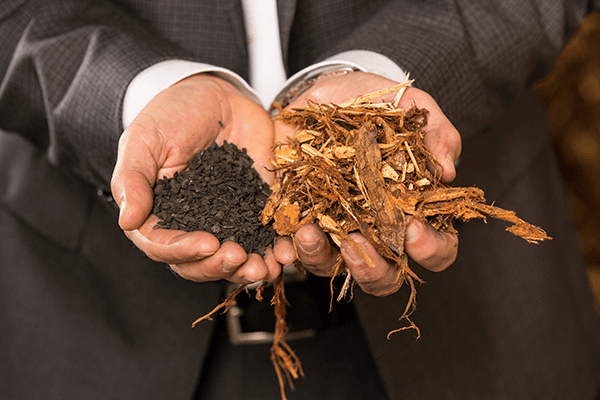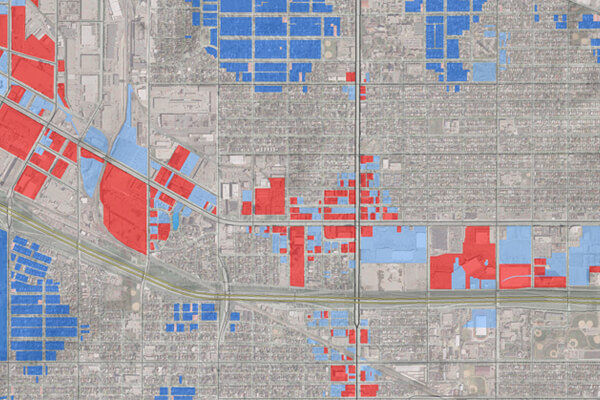From power plants to manufacturing facilities, companies across all industries are actively seeking cost-effective ways to reduce their carbon footprint. Several emerging technologies are available to help companies meet these carbon-reduction goals. From carbon capture sequestration (CCS) to energy storage to renewable power generation, carbon management technologies are becoming more advanced and increasingly affordable.
Here, we explore another common avenue for cost-effective carbon management—a plant betterment solution known as waste heat recovery.
What is waste heat recovery?
Waste heat recovery involves collecting and reutilizing excess heat from a plant or system. The sources of this heat could originate from hot exhaust gases, cooling towers, or even just hot surfaces. According to the U.S. Department of Energy, as much as 20–50% of energy inputted into a process is typically lost as heat. Implementing a waste heat recovery system can help capture lost heat and repurpose it to fuel another part of the plant process.
What are the benefits of waste heat recovery?
Implementing a waste heat recovery solution can produce many benefits, including funding incentives, reduced energy consumption, operating cost savings, decreased emissions, and improved system workflow and productivity.
Funding incentives
The Inflation Reduction Act (IRA) and existing tax credits might offer additional incentives for organizations to consider when evaluating energy efficiency measures. This includes:
-
Combined heat and power properties and waste energy recovery properties constructed before January 1, 2025, may be able to take advantage of existing Investment Tax Credits (ITC).
-
New projects constructed after 2025 (or projects with significant modifications) which meet emissions-based criteria for storage of produced energy may be eligible to take advantage of the new tech-neutral ITC (48E).
Emissions standards to qualify facilities will be established each year by the Internal Revenue Service (IRS). These standards have yet to be established for 2023. The incentives are available to both for-profit and not-for-profit entities through the direct pay and transferability provisions in the IRA.
Reduced energy consumption
Waste heat recovery can reduce energy consumption in overall process. If 20–50% of energy can be reutilized upstream and later used downstream, this can help companies significantly cut down on gas or electricity consumption.
Operating cost savings
As expected, reduced energy consumption means savings on overall operating costs through lower gas and electricity bills.
Decreased emissions
Reusing heat from exhaust gases can also cut down on emissions like carbon, methane, per- and polyfluoroalkyl substances (PFAS), and more by cooling this hot steam to solidify or make into an easily removeable state.
Improved system workflow and productivity
Waste heat recovery can also optimize processes by improving workflow and productivity, keeping the system maintained within itself and less reliant on external energy sources.
What are some ways to implement waste heat recovery processes?
Commercialized waste heat recovery options can come in many forms. Examples use heat exchangers to recirculate or capture hot waste gases or liquids to heat, preheat, or dehydrate. This can be used to optimize processes or combustion inside the battery limits or auxiliary systems like heating and ventilation, hot water heating, or floor heating. The simplest form would include routing exhaust gas to heat water or a different process material. In addition, almost any system that emits or produces heat can be used to generate hot steam, which can be transferred to electricity.
Other waste heat recovery applications may include using heat exchanger networks at oil refineries to cool processed fuel while also heating incoming oil or water. Hot process fluid can be used in a similar manner to generate steam, which can be used to heat or preheat other sections of the process. Waste heat can also be used to generate electricity using steam-and-turbine technology, similar to a Rankine cycle (the fundamental operating cycle used by power plants in which an operating fluid is continuously evaporated and condensed).
Which emerging technologies are being explored for waste heat recovery?
Research developments and emerging technologies are working to convert heat into electricity at a higher efficiency and, ideally, at a lower cost. The organic Rankine cycle or heat pumps are examples of new technologies being advanced to upgrade waste heat to electricity or other valuable utility streams. As this technology advances, it is continuing to become a more viable option.
Other emerging technologies attempt to implement power conversion from direct heat such as thermophotovoltaic (TPV), piezoelectric, and thermoelectric power generation. While some of these technologies may be years from marketability, Barr’s engineers continue to stay abreast of these new technologies as they develop to help our clients find the optimal solutions for their projects.
Barr has explored additional waste heat recovery options, including:
-
Using the inorganic/organic Rankine cycle to convert waste heat to electricity
-
Rerouting heat to be used as ambient air HVAC heating or solids drying
-
Using recirculated volatile organic compounds (VOC) off-gasses from a natural gas air-fired dryer to augment and reduce natural gas usage
-
Identifying waste heat opportunities within local districts to reduce municipal energy use, using GIS and spatial statistics to find high energy users
-
Designing an alternative-energy facility to generate power from food processing waste and livestock manure via the biogas generated from anaerobic algae
-
Recycling heat from an engine jacket or product stream to an HVAC system to heat ambient air within a building or route underground to heat a concrete slab in winter
Next steps
By reusing energy that has already been put into a system, waste heat recovery is one way for companies to save energy and meet their reduced carbon goals. Barr’s engineering and environmental specialists have extensive experience with projects focused on emissions reduction and alternative energy. We also specialize in carbon capture, utilization, and storage, taking on projects to help existing processes recover wasted heat and convert it into energy.
To learn more about how you might be able to take advantage of waste heat recovery options and the incentives offered through the IRA, contact our team.
About the author
Nicole Nguyen, senior chemical engineer, has more than a decade of process engineering experience working with energy, fuels, and power clients. She has served as a lead process-design engineer, startup and commissioning field engineer, project manager, and instrumentation and controls engineer.
Related projects
Barr assisted National Carbon Technologies (NCT) from conceptual design to startup in two project phases to redevelop an existing biomass carbon facility to produce wood-based activated carbon products and meet new market demands of the proprietary product. The proprietary process includes raw-material pre-processing, drying, a pyrolysis step with heat recovery, off-gas combustion, and finished-product sizing and packaging.

District Energy hired Barr to help assess the opportunities for developing energy districts within high-density areas of the metropolitan core. Barr provided GIS support and energy-use estimations for various areas within the 90-square-mile study. Combining a spatial-statistics algorithm with GIS mapping software enabled the generation of maps showing the areas of highest energy use. A ranking system for each cluster factored in total energy use, energy density per acre, potential for future growth, and other information, which in turn allowed District Energy to isolate clusters (“energy islands”) that held the most potential for contributing to a new energy district: those with clusters of heavy energy consumers and facilities with potential for waste heat recovery.

An alternative-energy facility in Minnesota generates 8 MW of power from food-processing wastes and livestock manure. Biogas generated by anaerobic digestion is used as fuel in four on-site 2,000 kW engine gensets that supply electric power to the local community. The digestate is sold to local farmers for land application as fertilizer. Initially, Barr assisted our client by providing support for an environmental review and permits for air, wastewater, stormwater, and water supply. Subsequently, we were hired to provide facility engineering design and support for procurement and bidding and construction. The project received national recognition as “Biogas Project of the Year” by the American Biogas Council. It was also featured in POWER Magazine.
